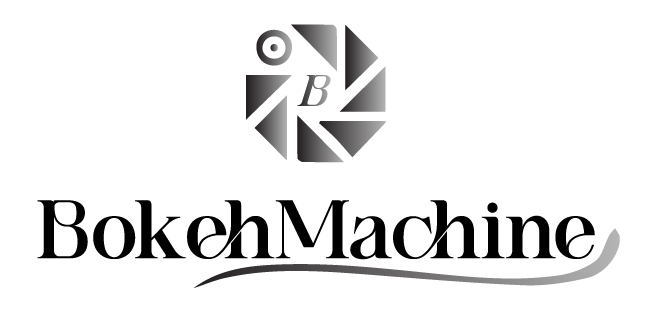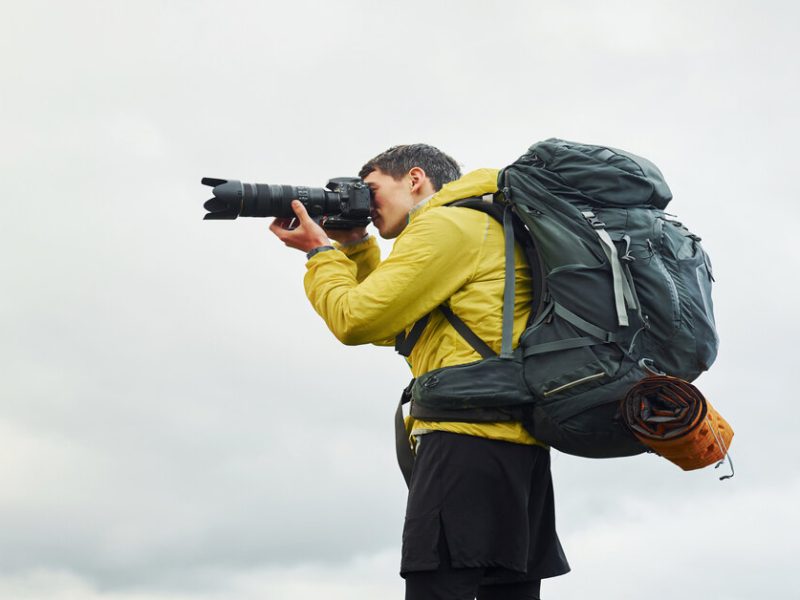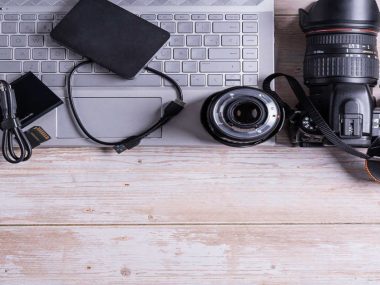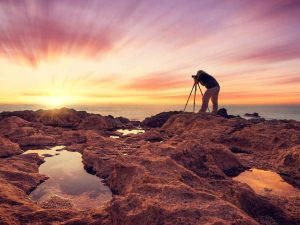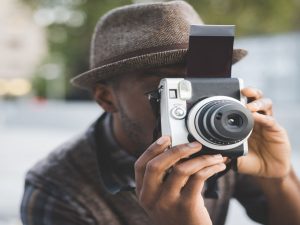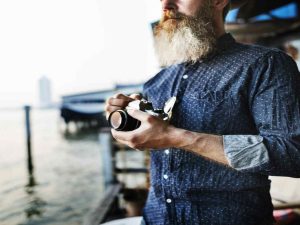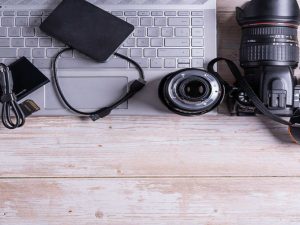Every photograph tells a story, however, there is a balance of vision, proficiency and equipment behind every potent photograph. Among serious photographers, it may be the possession of tools. Whether it is a high-end camera, the accurate lens, and the lighting systems, or the editing accessories, your equipment determines the extent of your creativity.
It is where gear reviews that photographers depend on become their treasure. The equipment is not made equal and neither does all equipment fit every style. Regardless of whether you are a wildlife photographer, portraitist, wedding photographer, or a commercial campaign photographer, the appropriate equipment changes your perception and image of the world and the way you capture it.
This professional review guide examines the best cameras, lenses, and accessories relied upon by the professionals, as well as the most important lessons that enable photographers to spend intelligently and not spend a fortune.
1. The Camera Body: Your Creative Engine
The camera of the photographer is not merely a tool it is a continuation of his/her vision. There are many professional models on the market today, both the marvel of mirrorless and the full-frame DSLR.
Many gear reviews that photographers rely on state that you should be using the best camera but that does not always mean the most expensive one; you need to use one that suits your intended use. For a deeper dive into selecting the right tools, see our ultimate camera gear guide.
- For Professionals: The Canon EOS R5, Sony A7R V, and Nikon Z9 continue to lead with incredible autofocus accuracy, image stabilization, and sensor resolution above 45MP.
- For Travel and Documentary Work: The Fujifilm X-T5 and Olympus OM-1 offer portability without sacrificing image quality.
- For Hybrid Shooters (Photo + Video): The Panasonic Lumix GH6 and Sony A1 stand out for versatile video recording and still photography performance.
When choosing a body, think beyond specifications. How it feels in your hand, how intuitive the menus are, and how it performs under pressure all matter as much as megapixels.
2. Lenses: The Real Game Changers
The camera bodies change every few years; however, the lenses determine how long you will be creative. Any master of equipment reviews photographer circles will explain to you – first invest in glass.
Prime lens provides the ultimate sharpness and night performance, and the zoom lens provides the flexibility of unpredictable environments.
Here’s what serious photographers swear by:
- Portraits: 85mm f/1.4 or 50mm f/1.2 for depth, clarity, and dreamy bokeh.
- Landscapes: 16–35mm f/2.8 wide-angle lenses for expansive, distortion-free shots.
- Wildlife and Sports: 100–400mm telephoto lenses for detail from a distance.
- Macro Photography: 100mm f/2.8 macro lenses for precision and texture in close-ups.
The lens is not only a composition but a storytelling tool as well. The most common and best in gear reviews that photographers read mention that the quality of lenses is what matters in terms of color, sharpness and focus speed more than the camera.
3. Tripods: Stability That Defines Precision
A tripod might sound like a simple thing, however, in professional photography, it is the unsung hero of consistency. A strong tripod will ensure that you capture sharp images, do product shots and even videos whether you are taking long exposures, product shots, or videos.
Other models such as Manfrotto Befree Advanced, Gitzo Mountaineer, and Peak Design Travel Tripod are the best choices that provide the perfect combination of portability and power (according to several reviews of gears by photographers).
Tripods made of carbon fiber are light, but sturdy, which is suitable in case a photographer wants to travel, whereas aluminum ones are very economical in the studio. Always make sure that you have one that can be adjusted in terms of leg angle, with addition of a secure lock and finally with fluid head to ensure a flowing motion.
A tripod is not only something that helps to stabilize your camera, but also helps to stabilize your vision.
4. Lighting Gear: Sculpting the Mood
Photography speaks of light. The emotion of your shot is determined by how you control it. Having the appropriate lighting equipment, and that can be strobes, reflectors, etc., is a game changer when it comes to your creative options.
Lighting is the most neglected area of investment in the best gear reviews of photographers. Mood and exposure can be controlled more through portable softboxes, continuous LED panels, and external flashes.
Essential lighting tools include:
- Speedlights: Compact and versatile, ideal for event and portrait work.
- Softboxes/Diffusers: Create softer, natural lighting.
- Reflectors: Essential for balancing light and eliminating harsh shadows.
- Light Stands and Umbrellas: Provide stability and direction control.
Professional photographers often mix natural light with artificial modifiers to create a unique signature look. With the right lighting tools, even an ordinary scene becomes extraordinary.
5. Storage and Backup: Protecting What You Create
There is no use in having a great camera or lens, but your work will be worth nothing when it is not safely stored. Professional photographers take storage as a tabernacle.
The pillars of the modern workflow are SSD drives, cloud storage and high speed memory cards. Most of the gear reviews photographers rely on such a brand as SanDisk Extreme Pro, Lexar Professional, and Samsung T7 Shield.
A good rule is the 3-2-1 backup system:
- Keep 3 copies of your work.
- Store them on 2 different media types (external drive + cloud).
- Keep 1 copy off-site for disaster recovery.
Storage is not glamorous, but this is what makes the difference between professionals and amateurs consistency and security.
6. Editing Tools and Software: Where Vision Meets Perfection
Even the most flawless raw shot needs refinement. Post-production is where artistry and precision merge.
Software like Adobe Lightroom, Capture One Pro, and DxO PhotoLab have become staples in gear reviews photographers rely on. They offer deep control over color grading, retouching, and exposure balance.
Hardware tools also matter. A calibrated monitor like the BenQ SW321C ensures color accuracy, while editing consoles such as the Loupedeck+ speed up workflow.
Editing isn’t about “fixing” an image, it is all about honoring your creative intent. Investing in editing gear and software is investing in your professional polish.
7. Accessories That Elevate Your Workflow
In other cases, it is the tiniest details of equipment that will make the most significant difference. Accessories make life easier and more comfortable such as cleaning kits to camera straps.
The least recognized necessities are what photographers suggest most and the most:
- ND Filters: Control light exposure for long-exposure landscapes.
- Lens Cleaning Kits: Keep optics pristine and dust-free.
- Camera Rain Covers: Protect gear from unpredictable weather.
- High-Quality Straps: Like the Peak Design Slide, for comfort during long shoots.
- Battery Grips: Extend power life during full-day events.
Accessories bridge the gap between creativity and convenience, allowing photographers to stay focused on the shot, not the struggle.
8. The Rise of Mirrorless Systems
The past ten years have seen the replacement of DSLR cameras with mirrorless technology to transform professional photography. Mirrorless bodies have become the top of the list of gear reviews read online and are now lightweight, fast, and loaded with high-tech autofocus systems.
Advantages include:
- Silent shooting modes for discreet photography.
- Real-time exposure preview through electronic viewfinders.
- Compact size without sacrificing image quality.
Sony’s Alpha series, Canon’s EOS R lineup, and Nikon’s Z models have proven that mirrorless is not just the future, it’s the now.
For professionals looking to upgrade, mirrorless systems offer unmatched speed, precision, and portability.
9. Drone Photography Gear
Photography has transformed the visual narration by aerial photography. Drones enable photographers to get an angle that was previously the prerogative of helicopters or mountain goats.
Reviews of the best gear The reporters of top gear prefer such feature drones as DJI Air 3 and Mavic 3 Pro because of their ability to record 4K/5K video, their stability, and the smart flight modes.
To get the best results:
- Practice in open, legal spaces before commercial shoots.
- Calibrate your drone before each flight.
- Use ND filters for smooth cinematic footage.
Drone photography isn’t just an add-on, it’s a new art form, expanding how photographers view composition, symmetry, and light.
10. Gear Maintenance: The Secret to Longevity
Even the best gear needs care. Your equipment can degrade as time passes due to dust, humidity and handling wear. The professionals understand that maintenance is not a choice but it is a profession.
Some of the general tips seen in the gear review forums in photographer circles are:
- Clean lenses with microfiber cloths and blower brushes.
- Store equipment in dry cabinets with silica gel packs.
- Service camera sensors annually or after heavy use.
- Keep firmware updated for peak performance.
Taking care of your tools ensures they take care of your vision for years to come.
11. Understanding Gear for Every Genre
Photographers do not all need the same set up. Making a good decision depending on your niche is a guarantee that every dollar works in your favor.
- Wedding Photographers: Dual-card slot cameras, 70–200mm lenses, and reliable flashes.
- Landscape Photographers: Wide-angle lenses, tripods, and ND filters.
- Studio Artists: High-resolution sensors, controlled lighting, and tethered shooting systems.
- Wildlife Photographers: Fast telephoto lenses, rugged bodies, and camouflage gear.
This genre-specific approach is often emphasized in gear reviews photographers trust because it helps you tailor equipment to your craft, not trends.
12. The Psychology Behind Great Gear
The understanding is that great photographers realize that gear is not just technical but also psychological. The correct equipment develops confidence, velocity and ease during unpredictable circumstances.
When your equipment is made to feel natural, you do not worry more about shooting options but rather about storytelling. The reason reading gear reviews published by photographers is not only about specifications is the fact that it is a process of knowing how equipment works with your mind.
Mastery occurs when your camera becomes invisible between you and what you are photographing, that is, when you and your equipment become one.
Conclusion
At the end of the day, photography is an observational art. The most appropriate equipment reviews that photographers believe in help them remember that equipment can only supplement creativity but not to replace it.
Awesome equipment opens opportunities, yet purpose is determined by vision. You can be using a mirrorless system or a ten-year-old model of the DSLR, but the key to it is what you get done with it.
Invest in equipment that suits your craft, maintain it well and continue learning how to see, not to shoot. Since an amateur photographer is capable of making eternal art even with the simplest means, even simple tools can be used to produce eternal art in the hands of a serious photographer.
